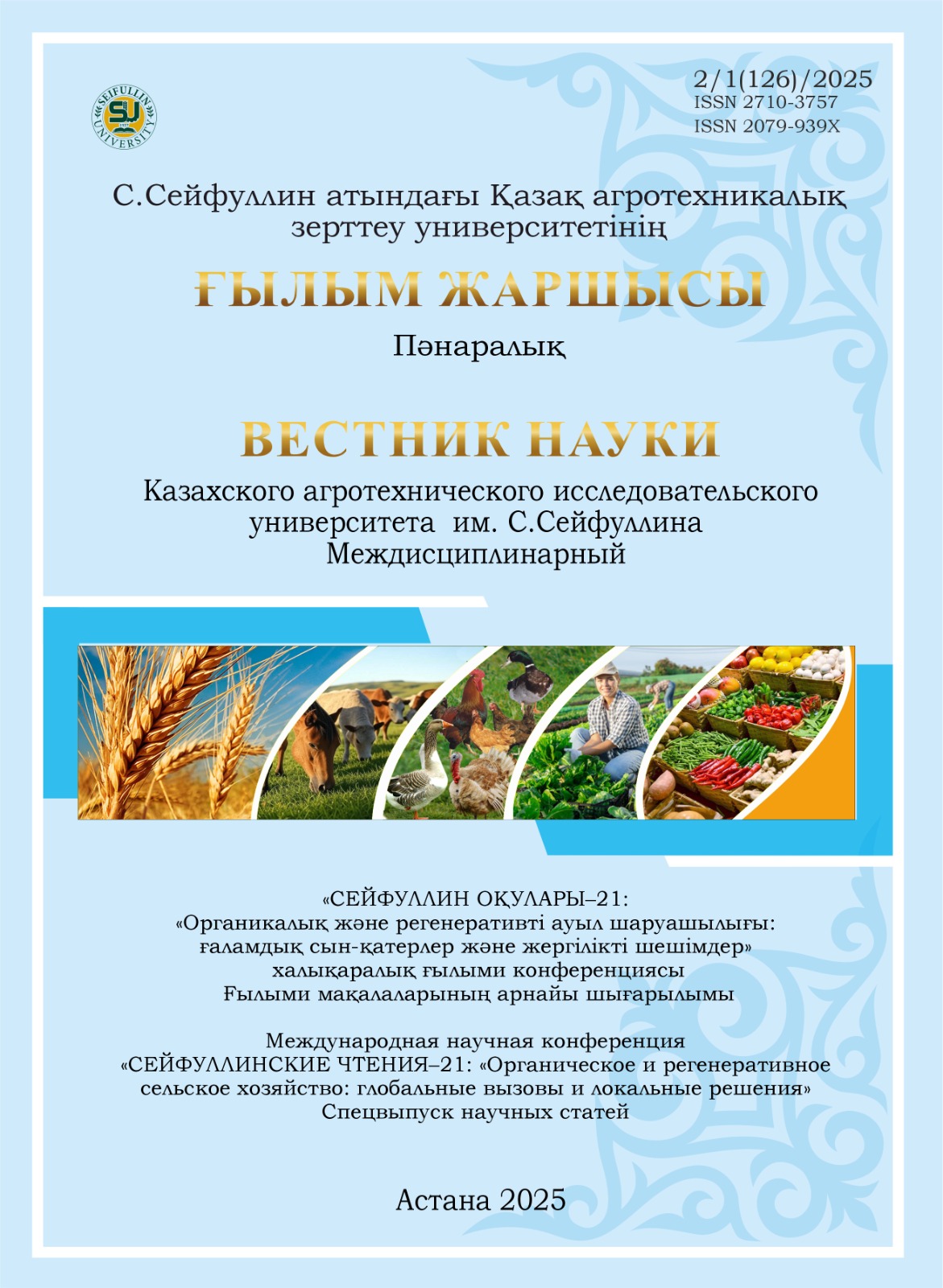Biological protection of winter wheat from pests in the south-east of Kazakhstan
DOI:
https://doi.org/10.51452/kazatu.2025.2/1(126).1920Keywords:
winter wheat; red-backed cutworm; harmful shield bug; wheat thrips; cereal aphid; biological protection.Abstract
Background and Aim. The southeastern region of Kazakhstan is an important agricultural area where winter wheat occupies a significant share in the crop structure. However, the yield of this crop is often reduced due to a complex of pests, including cereal aphids, thrips, cereal beetles, and other phytophagous insects. Traditionally, chemical insecticides are used to control these pests, which leads to a number of negative consequences: environmental pollution, development of pest resistance, reduction in the population of beneficial entomophages, and residual chemicals in the produce. Due to the growing need for the ecological modernization of agricultural technologies, increasing attention is being paid to the use of biological control methods. These methods are based on the application of entomophages, biopreparations, and agrotechnical practices that stimulate natural regulators of pest populations. The aim of this study is to substantiate and develop an effective system of biological protection of winter wheat against pests under the agro-climatic conditions of southeastern Kazakhstan, taking into account the regional characteristics and the structure of the pest complex.
Materials and Мethods. Weekly monitoring of harmful organisms was conducted at demonstration organic farming plots. Classical methods of agricultural entomology and plant protection were used to study the biology of phytophagous insects.
Results. Research process. During the study carried out at experimental fields of the Kazakh Research Institute of Agriculture and Crop Production in the Almaty region, 16 pest species were identified on winter wheat crops. In April, at the tillering stage, red-backed cutworm (Agrotis segetum) and harmful shield bug (Eurygaster integriceps) were detected with populations close to the economic threshold of harmfulness (ETH).
Conclusion. Two treatments using UAVs demonstrated high efficacy of the preparations: 85.9% against cutworm and 89.4% against shield bug. At the heading stage, significant infestation by wheat thrips and cereal aphids was recorded, which also required protective measures. Biological efficacy against wheat thrips was 88.8%, and against cereal aphids – 92.5%. The results confirm the high efficiency of biological agents in protecting winter wheat from harmful insects.

